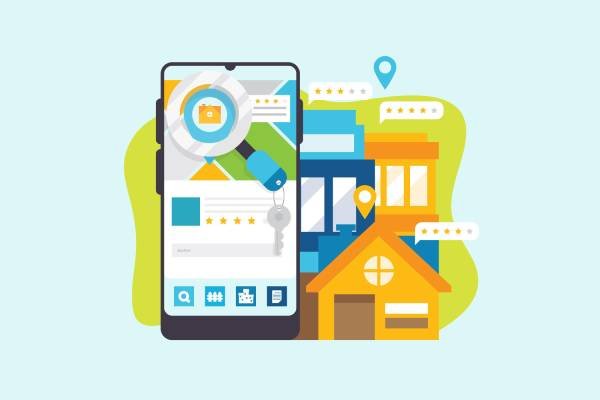What is the average cost of creating an E-Learning app for an institute or coaching center?
Due in large part to the proliferation of e-learning platforms and mobile applications, the educational landscape is undergoing a radical shift. E-learning apps have become an essential component of educational institutions as well as coaching centers due to the ease and adaptability that they provide.
If you are thinking about establishing an e-learning software for your institute or training facility, you may be curious about the typical costs associated with such a venture. So, for this you can also look for professional android app development to create the application for you.
However, this article digs into the aspects that determine the cost of producing an e-learning app and provides insights to help you estimate the expenses involved in the process.
Recognizing the Landscape of Available E-Learning Applications
Apps for E-learning can take many different shapes and are designed to meet a wide range of instructional requirements. The nature and breadth of your application will have a substantial bearing on the total price. The following is a list of common categories for e-learning applications:
E-Learning Applications for Institutions:
These applications were developed specifically with educational establishments like schools, colleges, and universities in mind. They offer a platform that may be utilized by instructors for the uploading of course materials, students for the accessing of resources, and administrators for the management of the learning process.
Apps for the Coaching Center:
These applications were designed with coaching centers and tutoring services in mind specifically. They enable students to participate in live classrooms, recorded lectures, assignments, and tracking of their progress.
Applications for the Study of Languages:
Apps designed specifically for learning new languages typically include both lessons and practice opportunities. The majority of the time, they consist of elements such as interactive courses, quizzes, and pronunciation assistance.
Applications for Professional Development:
These applications are designed for working professionals who want to improve their abilities. They offer access to training programs, live webinars, and certificates in a variety of sectors, ranging from information technology to marketing.
Applications for Professional Growth:
Apps for skill development encompass a wide variety of useful skills, from coding to cooking, and all in between. They provide video walkthroughs, hands-on practice, and the ability to track one's progress.
Different Types of E-learning apps
There are several distinct sorts of e-learning apps, each of which is designed to address a unique set of educational requirements and goals. The following are some examples of frequent kinds of e-learning apps:
E-Learning Applications for Institutions:
These applications were developed specifically with educational establishments like schools, colleges, and universities in mind. They offer a platform that may be utilized by instructors for the uploading of course materials, students for the accessing of resources, and administrators for the management of the learning process. The development of a centralized digital learning environment can be aided by the use of institutional e-learning apps.
Applications for Coaching and Tutoring:
Apps for coaching and tutoring are designed specifically with coaching centers, individual tutors, and educators in mind. They make live classes, recorded lectures, assignments, and tracking students' progress through the program available to students who are looking for further support in a variety of disciplines or are preparing for exams.
Applications for the Study of Languages:
Apps dedicated to language learning are designed to assist users in expanding their linguistic horizons. In order to improve one's command of the target language, these resources frequently provide interactive courses, quizzes, pronunciation guidelines, and vocabulary exercises.
Applications for Professional Development:
Apps for professional development are designed specifically for working professionals who are interested in advancing their knowledge or obtaining certifications in a variety of specializations. These apps provide access to a variety of educational opportunities, such as classes, webinars, and workshops, which aid users in advancing their careers.
Applications for Professional Growth:
Apps for skill development encompass a wide variety of useful skills, from coding to cooking, and all in between. They assist customers gain new skills or improve existing ones by providing video tutorials, hands-on activities, and other forms of interactive content on their platform.
MOOCs (Massive Open Online Courses):
MOOC platforms provide users with access to a diverse range of courses, both free and for a fee, spanning a variety of topics. They frequently collaborate with educational institutions, colleges, and industry professionals in order to deliver informative content of the highest possible standard to an audience located all over the world. Users have the ability to enroll in the classes of their choosing and progress through the material at their own leisure.
Applications for Corporate E-Learning:
Apps for corporate e-learning are built specifically for companies and other organizations who want to offer their staff members possibilities for professional growth and advancement. Onboarding, compliance training, and skill enhancement are just examples of the topics that can be included.
Educational Game Apps:
Apps for educational games blend educational content with fun gameplay. The use of gamification in these apps makes education more exciting and interesting, particularly for students of a younger age. They cover a diverse range of topics, from language and history to mathematics and the natural sciences.
Open Courseware Apps:
Access to free educational resources such as lectures, videos, textbooks, and other course materials can be gained through the use of open courseware apps. These resources originate from educational institutions and universities. Users have the ability to investigate a diverse assortment of issues and topics.
Your educational goals and the people you intend to teach should guide your selection of the type of e-learning program to use. Regardless of whether you are an educational institution, a coaching center, a business organization, or an independent educator, choosing the appropriate kind of e-learning app can improve the learning experience and engagement of your users.
What are the Benefits & the Features of e-Learning Apps?
E-learning programs come with a plethora of advantages and cutting-edge capabilities, which combine to make them a potent instrument for educational and training purposes. The following is a list of some of the most important benefits and characteristics of e-learning applications:
Advantages of Utilizing E-Learning Applications:
Accessibility:
Applications that are used for e-learning make it possible to access educational resources and courses from any location with an internet connection. Learners are able to study whenever it is convenient for them thanks to this accessibility, which eliminates geographical constraints.
Ability to adapt:
Learners have the ability to pick when and where they study, giving them the flexibility to match their education with other obligations such as employment, family, or other responsibilities. E-learning may adapt to a variety of learning styles and can proceed at a number of various speeds.
Economically Sound:
It's possible that traditional in-person education can be more expensive than online schooling. It is no longer necessary to commute, print materials, or maintain physical facilities, which results in a reduction in overall expenditures.
Personalized expression:
E-learning applications frequently make use of algorithms in order to personalize content and adapt to the unique educational requirements of each user. This makes the learning experience more enjoyable by responding to the individual strengths and weaknesses of each student.
Getting Engaged:
Learners are more engaged and their comprehension is improved when gamification, quizzes, interactive content, and multimedia elements are used. Learning is made more effective and entertaining through the use of interactive features.
Ability to scale up:
Learning on the internet is easily scalable to suit a big number of students. Whether done in a classroom or an office setting, it is an effective method for imparting knowledge to a large number of people.
Monitoring and evaluation are as follows:
The progression of learners may be monitored, and their level of comprehension can be evaluated, using the capabilities provided by e-learning software. These analytics provide assistance to educators in making decisions based on data in order to improve learning outcomes.
Always consistent:
E-learning makes it possible for every student to get instruction of the same caliber, regardless of where they are located. It does away with the variations that are likely to emerge in conventional classroom situations.
Applications for E-Learning That Have More Advanced Features:
Interactive Content
E-learning applications typically use multimedia components, interactive simulations, and animations to improve the user's level of involvement and level of comprehension.
Learners are motivated and the learning process is made more enjoyable thanks to gamification features such as leaderboards, badges, and awards.
Learning from One's Peers:
Learning and conversation between users is encouraged through a variety of features, including chat rooms, discussion forums, and collaborative projects.
Learning from One's Peers:
Learning and conversation between users is encouraged through a variety of features, including chat rooms, discussion forums, and collaborative projects.
Adaptive Learning
Learning systems that are adaptive modify the level of difficulty of the information based on the performance of the learner. This ensures that the learner is presented with appropriate challenges.
Virtual Reality (VR) and Augmented Reality (AR):
Virtual reality (VR) and augmented reality (AR) are being integrated into some forms of online education software to produce more immersive learning environments, particularly in technical and medical professions.
Artificial intelligence
Personalizing content, recommending courses, providing automatic feedback, and even enabling chatbots for learner support are all examples of what AI-driven features can do.
Integration of the LMS:
Integration of a Learning Management System (LMS) provides educators with the ability to manage courses, monitor learners' progress, and conduct detailed performance evaluations.
How Much Does It Expense to Create a Platform-Based Educational App?
The cost of creating an instructional software is highly variable, with the platform of choice being one of the most important considerations. Educative apps can be made for multiple operating systems, the most popular of which are iOS and Android, or even for both. There are differences in time and money needed to create for each platform. Developing a platform-based educational software entails the following expenses:
Build an App for iOS:
Depending on the app's complexity, the price tag for creating an educational app for iOS could be anywhere from $25,000 to $100,000 or more. The price tag covers the creation of essential functions, the design of the user interface, and some initial content. The price may rise as more features, content, and personalization options are added.
Making an App for Android:
Creating an Android equivalent of an educational software may cost anywhere from $25,000 to $100,000 or more, which is in the same ballpark as iOS. Considerations such as the app's complexity, design, and features will affect the final price. Due to the wide range of Android devices and screen sizes, additional testing is usually necessary once development is complete.
Developing for Multiple Platforms:
You may create an instructional app that runs on both iOS and Android with the help of cross-platform development frameworks like React Native or Flutter. However, depending on the complexity of the software, this method may still wind-up costing as much as platform-specific development.
An initial investment of as little as $10,000 is possible if you go with a web-based educational software or a Progressive Web software (PWA). Progressive web apps (PWAs) can run on any device with just a web browser. However, they could not provide as smooth of performance or as many native features as programs built specifically for mobile devices.
Keep in mind that the complexity of the app, its design, features, content generation, user administration, and the level of interactivity all have an impact on the cost of developing an educational app. The added complexity and sophistication of the system will result in a larger price tag. This is especially true for features like gamification, real-time collaboration, social engagement, and adaptive learning.
Consideration should also be given to the recurring expenditures of upkeep, upgrades, and server fees.
Talking to professional e-learning app development company who can give you a detailed price based on your specific needs and goals is the best way to acquire an accurate estimate for your educational app project.
Wrapping Up
The cost of establishing an e-learning app for your institute or coaching center can vary greatly depending on a number of aspects, such as the complexity of the app, its design, the platform it runs on, and the material that is created. Even while the initial investment might seem big, the returns on an e-learning software that is well-designed, intuitive, and user-friendly can be enormous since it can bring in more students and improve the quality of the education they receive.

Read more blogs

Time and Cost of Developing an AI like ChatGPT: Key Factors Explored
Explore the factors influencing the time and cost of developing an AI model like ChatGPT. Understand key considerations for successful AI ap

Guide to Successful Real Estate App Development: Features, Technologies, and More
Explore the advantages of developing a real estate app, key features, technologies to employ, and the importance of collaborating with a Rea

Custom vs. Template-Based Website Development: A Comprehensive Cost Comparison Guide
Explore the costs, pros, and cons of custom website development vs. template-based solutions. Make an informed decision for your online pres
